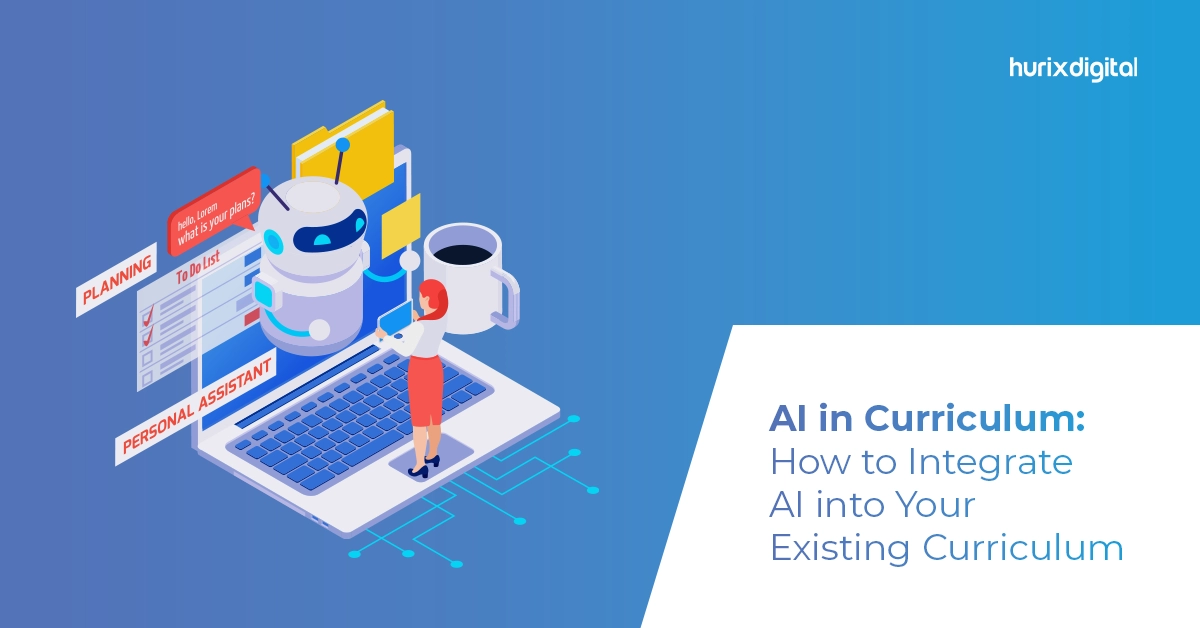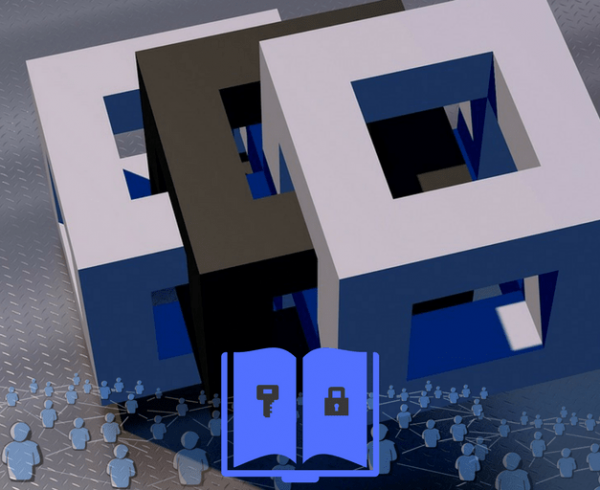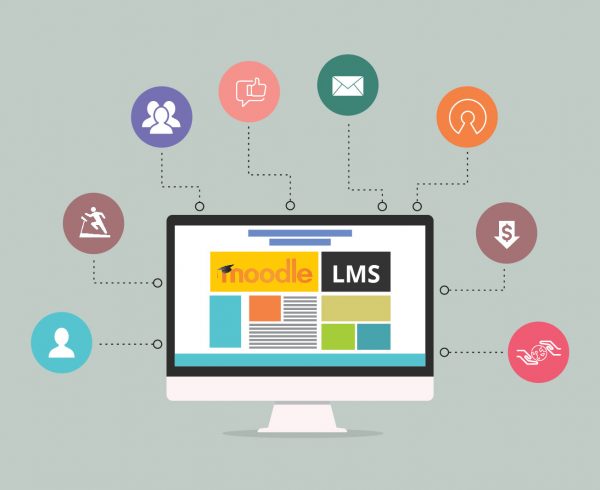Summary
This article provides a comprehensive overview of the benefits of AI in the school curriculum. It discusses the reasons why AI should be introduced in the curriculum, how it can help improve the learning experience, and how it can help improve your existing curriculum creating.
In recent years, the education landscape has evolved more rapidly than ever. Traditional classrooms now embrace interactive learning experiences through the use of smartboards.
In addition to streamlining administrative processes and enhancing teacher-student communication, digital tools and platforms have completely changed data management in educational institutions.
The next big leap in this digital evolution lies in the integration of Artificial Intelligence (AI) —an impactful and promising technology of our time. Introducing AI in the curriculum will help students learn 21st-century skills and prepare them for the digital age.
Table of Contents
- Should AI be Introduced in the School Curriculum?
- How AI Can Help Improve Your Existing Curriculum?
- What are the Key Points to Consider When Integrating AI into the Curriculum?
- Summing Up
Should AI be Introduced in the School Curriculum?
With Artificial intelligence (AI) already having permeated various industries, the moment is ripe for its integration into our classrooms.
Here are a few compelling reasons why AI in school curriculum is essential:
1. Enhances Learning Experience
Three ways AI is revolutionizing the way students learn:
- Personalized Learning Experience: Teachers, with the help of AI-powered tools, can analyze student data, provide insights, and even create personalized lesson plans that cater to each student’s needs.
- Independent Learning: It fosters independent learning through interactive tools. For example, students can use chatbots for instant information access, feedback, and language practice.
- Immersive Learning through VR and AR: Another way AI can make learning more immersive is via virtual reality (VR) and augmented reality (AR). For example, students, by using VR, can explore the human body, travel through time, or visit different parts of the world. This makes learning more memorable, leading to improved retention.
2. Prepares Students for the Future
Introducing AI in the school curriculum will shape students’ minds for the future. As AI and machine learning jobs become more prevalent globally, teaching students about AI will equip them for these roles and give them clarity on AI’s societal impact.
Additionally, learning AI concepts and working will improve their critical and computational thinking, which are critical in other fields beyond Tech and everyday life.
Also Read: How AI Is Personalizing Education for Every Student?
How AI Can Help Improve Your Existing Curriculum?
Although AI has been around for a while, its adoption in the field of educational technology has been slow. However, virtual learning during the pandemic created a seismic shift in the industry.
Since then, Artificial Intelligence (AI) has helped simplify educational processes by providing students access to suitable courses, enhancing teacher-student communication, and freeing up more of their time to focus on other activities.
Here are three ways AI is used in education:
1. Creating Courses
AI streamlines the curation of courses, saving money and effort while contributing significantly to curriculum development and evaluation.
AI produces interactive content with ease, regardless of whether it starts from scratch or uses templates. In-app comments enable effective collaboration for ideal training resources.
AI in curriculum development evaluates students’ past academic performance, enabling educators to customize lessons to individual student’s needs and address knowledge gaps for the best possible learning programs.
2. Offering Personalized Learning
Personalization is a significant trend in education. By leveraging AI in curriculum design, educators are now able to customize learning based on a student’s unique preferences and experiences.
To ensure that every student gets the most out of their learning, AI may adapt to their knowledge level, desired learning goals, and learning pace.
Furthermore, AI-powered solutions would evaluate an individual’s learning history, identify areas of strength and weakness, and suggest improvement courses, giving them several opportunities to personalize their learning.
As per a report, the market for artificial intelligence (AI) in education was valued at USD 4 billion in 2022. It is expected to increase at a compound annual growth rate (CAGR) of more than 10% between 2023 and 2032 due to the growing trend towards personalized learning.
3. Automating Tasks
Teachers have a lot on their plate, from class management to administrative and organizational tasks. In addition to making progress reports and organizing resources and materials for lectures, they also grade tests, evaluate homework, complete necessary paperwork, and manage instructional materials.
This could overwhelm them often with non-teaching activities. Teachers can now free up more time to focus on teaching aspects by automating manual activities with the use of automation technologies and solutions.
After all, AI tools are helping improve the learning experience and freeing teachers to focus on areas where they can add more value.
What are the Key Points to Consider When Integrating AI into the Curriculum?
Here are a few key considerations that schools, colleges, and universities should keep in mind while integrating AI into their curriculum:
1. Establish Connections
Take a crash course in AI, consult curriculum specialists, and look for natural entry points to integrate AI within your subject area.
Consider the following questions:
- How do your students currently use AI in their daily routines?
- Which AI tools and resources are relevant and available to your students?
2. Review Your Curriculum
Look at what’s already working well in your class and can simply be enhanced. Ask yourself:
- In what ways can you integrate AI with curriculum standards and objectives?
- In what manner can you align with the AI4K12 Five Big Ideas in AI?
The AI4K12 team has set out the AI4K12 Five Big Ideas to frame teaching AI from the perspective of school-aged (K-12) children. These ideas are:
- Perception: Computers perceive the world through sensing
- Representation and reasoning: AI-powered systems uphold and employ real-world representations for reasoning.
- Learning: Computers are capable of learning from data.
- Natural interaction: To interact with people in a natural way, intelligent entities need a variety of knowledge.
- Societal impact: Artificial intelligence has the potential to have both positive and negative impacts on society.
3. Set New Objectives and Evaluation Criteria:
Analyze the effects that studying AI will have on learning goals. Try to get the right balance of content while keeping the following in mind:
- How do you want your students to learn the functions, applications, and goals of artificial intelligence?
- How will you help students learn more about artificial intelligence (AI) while achieving subject curriculum learning objectives?
4. Develop and Carry out Appropriate Learning Activities
To maximize impact, AI activities must be approachable, engaging, and interactive. Keep these tips in mind:
- Whenever possible, draw comparisons between AI concepts and familiar, real-world ideas. (e.g., sensors vs. senses)
- Scaffold learning activities, moving from introductory concepts to hands-on activities, leading up to culminating performances involving synthesis and creation.
5. Evaluate, Iterate, and Build
Evaluation is key for course correction, serving as one of the best practices in curriculum development. As you start to fully integrate AI into your curriculum, make sure to keep a close eye on learning outcomes and adapt your content to meet the needs of your students.
Observe these basic rules:
- Utilize both conventional and unconventional methods of assessment to routinely gather data.
- Get input from your students regarding their interest in novel AI ideas or applications, then modify your curriculum as needed to refine it.
The continuous process of learning, adjusting, and improving as you begin the process of incorporating AI into your curriculum guarantees a dynamic and memorable learning experience.
Also Read: Overcoming Educational Challenges with AI-Driven EdTech Solutions
Summing Up
The introduction of AI across the curriculum system is a breakthrough that can bring about innovation within education. The outlined considerations for AI integration provide a strategic roadmap, ensuring institutions harness the full potential of this impactful technology.
By incorporating AI into the curriculum, institutions can now better prepare students for a world where AI is becoming a ubiquitous aspect of their day-to-day lives.
Unlock the future of digital learning with Hurix Digital, a leading digital curriculum provider in the world. Our AI-powered adaptive learning platforms, interactive content creation, and learning analytics empower institutions to develop immersive, scalable, and impactful learning environments for Higher Education and K-12.
Contact us today and step into the future of learning!











